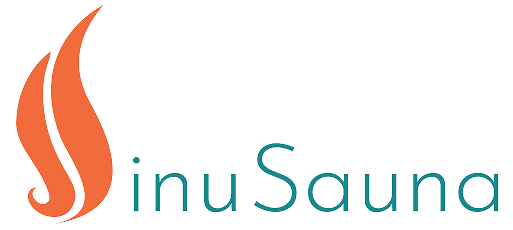For many of us, nasal congestion is more than a nuisance. It disrupts sleep, drags energy levels, and can make even simple daily tasks feel burdensome. Over the years, people reach for Neti Pots, Navage, steam inhalation, allergy pills, decongestants, nasal sprays, humidifiers, and more—but each method has trade‑offs: messiness, side effects, limited duration of relief, or simply the need for repeated dosing.
But what if there were a gentler, more “hands‑off” alternative? Enter heated dry air therapy, embodied in the SinuSauna mask. Here we explore why dry, heated air may offer a compelling alternative (or complement) to common congestion remedies, what makes SinuSauna unique, and practical tips for making your own congestion relief routine safer and more effective.
Why Many Traditional Methods Fall Short (or Come with Trade‑Offs)
Before exploring what makes SinuSauna different, it helps to understand the limitations of commonly used congestion solutions.
Neti Pots & Nasal Irrigation
What it does well:
A neti pot (or similar nasal rinse device) uses a saline solution to flush mucus, allergens, irritants, or crusted secretions from the nasal passages. It can thin mucus, reduce stuffiness, improve breathing, and relieve sinus pressure.
Pitfalls and risks:
-
Risk of infection if water is not sterile: The FDA and medical sources warn that using non-filtered tap water (i.e. untreated city water) in nasal irrigation can introduce microbes (even rare but severe organisms like Naegleria fowleri) into the nasal cavity.
-
Drying or irritation of mucosa: Overuse or improper saline concentration can leave residual salt behind, potentially irritating the delicate nasal lining or contributing to nosebleeds.
-
Limited preventive effect: Rinsing works well in the moment to clear mucus, but it doesn’t prevent congestion from re‑forming due to inflammation, allergen exposure, or viral replication.
-
Physical discomfort/effort: Not everyone finds it comfortable or easy, especially when sinuses are completely blocked. Some people feel “like they’re swimming in their head” just after a rinse.
-
Logistics/inconvenience: Between preparing sterile water, cleaning the device, and executing the rinse properly, many users find the process tedious or inconsistent over time.
Steam Inhalation & Hot Mist
What it does well:
Steam or warm humidified air can help loosen thick mucus, soothe irritated tissues, and temporarily open airways. The moist warmth helps liquefy secretions.
Limitations and downsides:
-
Short duration of effect: Once you stop inhaling the steam, the benefits may quickly fade, especially in dry indoor environments.
-
Risk of scalding: If the steam is too hot or if you’re too close to the heat source, there’s a risk of burns to the nasal lining or face.
-
Moisture can encourage microbial growth: Excess humidity (especially in closed, poorly ventilated rooms) can lead to mold or bacterial growth.
-
Inconsistent delivery: The user must time and position themselves relative to the steam source; it’s harder to deliver precisely controlled temperature or moisture to the deeper turbinates or sinus openings.
Over‑The‑Counter (OTC) Decongestants, Antihistamines & Nasal Sprays
What they do well:
-
Decongestants (e.g. pseudoephedrine, phenylephrine) shrink swollen nasal blood vessels, providing rapid relief from congestion.
-
Antihistamines block histamine receptors and reduce allergic symptoms.
-
Topical nasal sprays (e.g. oxymetazoline, steroid sprays) can quickly reduce swelling in the local mucosa.
Trade‑offs and risks:
-
Rebound congestion (“rhinitis medicamentosa”): Overuse of nasal decongestant sprays can cause a rebound effect, such that the nasal tissues swell again once the drug is withdrawn.
-
Systemic side effects: Decongestants may raise blood pressure, cause jitteriness, insomnia, or palpitations in susceptible individuals.
-
Sedation/cognitive effects: Some antihistamines (especially first-generation) can cause drowsiness, fogginess, or impaired concentration.
-
Masking, not treating cause: These medications relieve symptoms, but they don’t always address underlying triggers (viral replication, mucosal inflammation, dryness, structural issues).
-
Dependency/tolerance: Long-term reliance on sprays or pills can reduce the body’s responsiveness or lead to escalating doses.
Humidifiers/Environmental Humidification
What they do well:
Adding moisture to the ambient air (via cool or warm mist humidifiers) can reduce mucosal dryness, making breathing more comfortable and helping cilia (microscopic nasal hair structures) function better.
Challenges and caution:
-
Over‑humidification risks: If humidity is too high, you can promote mold, dust mite, or microbial proliferation in your home.
-
Diffusion losses: Humidified air often cools before reaching the nasal passages; the warming and drying effect you might want doesn’t fully carry through.
-
Not directly heating: Humidifiers don’t deliver thermal energy in the nose, so their ability to disrupt viral or bacterial replication is minimal.
Why Heated Dry Air (like SinuSauna delivers) Has Unique Potential
Given the limitations above, the concept of applying dry, warm air directly to the nasal passages emerges as an intriguing path. Below are the physiological and theoretical advantages.
1. Direct, localized thermal therapy
By delivering heated air (at controlled temperatures) directly into the nasal cavity, you can:
-
Help loosen thick mucus and support clearance (similar to steam, but in a drier form).
-
Reduce mucosal swelling: Thermal energy can influence vasodilation and local inflammation, potentially calming hyperemia in the nasal mucosa.
-
Impede microbial replication: Many bacteria and viruses have limited survival at elevated temperatures. SinuSauna delivers air up to ~130 °F.
-
Encourage physiologic defenses: Heat shock proteins (HSPs) may be stimulated by mild thermal stress; these proteins help cells cope with stress, regulate inflammation, and repair damaged proteins. (Some sauna literature suggests systemic benefits from heat exposure.)
In short, heated dry air provides a targeted warming stimulus without adding moisture (avoiding some of the drawbacks of steam or humidification).
2. Dry vs. moist environments and microbial control
Moist environments tend to favor microbial growth—bacteria, fungi, and viruses often thrive in wet or humid settings. Dry heat, in contrast, can create inhospitable conditions for microbial proliferation on surfaces. Germs do not like temperatures over 102 °F” and dry heat (versus moist) is less favorable for germ growth.
By reducing moisture and raising local temperature, the environment inside the nasal passages may become less conducive to prolonged pathogen survival (or reactivation). Over time, this may reduce the microbial load or lower the rate at which congestion-causing organisms take hold.
3. Convenience, consistency and low systemic burden
Because SinuSauna is wearable, self-contained, and timed (e.g. 10–20 minute sessions), it offers:
-
Hands‑free operation: Once the mask is on, you can relax, read, meditate, or watch TV.
-
Predictable dosing: Temperature control and session timers help maintain consistent exposure without the user needing to manually adjust or micromanage. The mask begins cycling heated air within ~20 seconds and has preset temperature levels (100°F, 105°F, 110°F) and an auto shut-off.
-
Minimal systemic exposure: Because heat is localized and the method avoids ingesting or absorbing systemic drugs, risk of systemic side effects (like blood pressure changes or sedation) is lower — as long as precautions are respected.
-
Mess-free (no liquid, rinses, or residue): Unlike neti pots or steam devices, there's no water handling or residual moisture.
4. Support for better sleep and nocturnal congestion control
One of the biggest pain points with congestion is its impact on sleep. Blocked nasal passages contribute to snoring, mouth breathing, and frequent nighttime awakenings.
Preliminary results from the SinuSauna sleep study suggest that when people use the mask nightly (20 minutes before bed), they reported:
-
Fewer awakenings due to congestion
-
Faster time falling asleep
-
Improved subjective sleep quality
-
Less reliance on nasal sprays or decongestants during the test period
While this is early-stage data (small pilot), it aligns with the rationale that pre‑emptively warming and drying the nasal mucosa can reduce overnight swelling and post-nasal drip.

What Makes SinuSauna Stand Out in the Heated Dry Air Space
The concept of heated dry air isn’t wholly new — but SinuSauna integrates it into a consumer device with design features intended to optimize usability, safety, and efficacy. Here are key differentiators:
-
Doctor-invented and backed by science
SinuSauna was developed by physicians drawing from over seven decades of research on respiratory health -
Temperature control and cycling
SinuSauna offers multiple preset temperature options and cycles the heated air appropriately. This allows users to adjust according to comfort or sensitivity. -
Auto shut-off / safety features
The mask is designed to shut off automatically after ~20 minutes to avoid overheating or prolonged exposure. -
Mask design and fit
The mask is built to fit the nose and mouth area, with silicone materials and adjustable straps.
These design, safety, and usability touches help set SinuSauna apart from “DIY heated mask” hacks. But as always, individual anatomy, sensitivity, and respiratory conditions will influence whether it works well for a given user.
To make the most of heated dry air therapy — whether via SinuSauna or your own nasal warming routine — we recommend you start at lower temperatures and build up, humidify your ambient air moderately, and hydrate internally. SinuSauna is the perfect complement to add to your current wellness routine to ensure you’re breathing clear. Learn more at SinuSauna.com.








